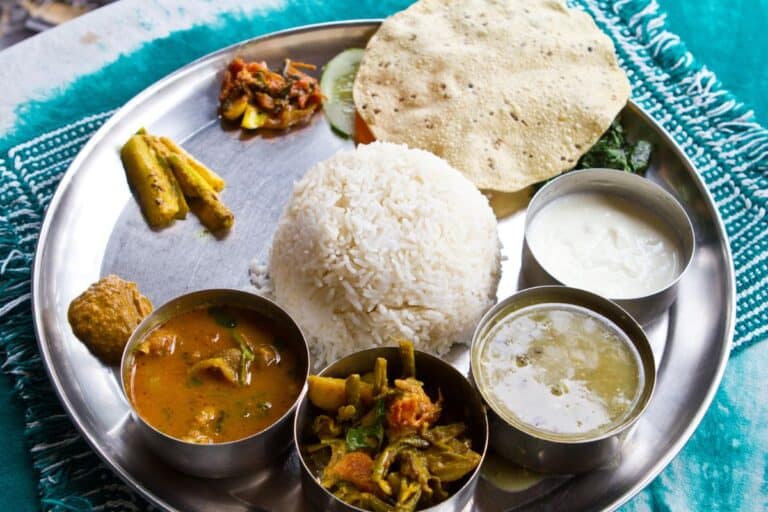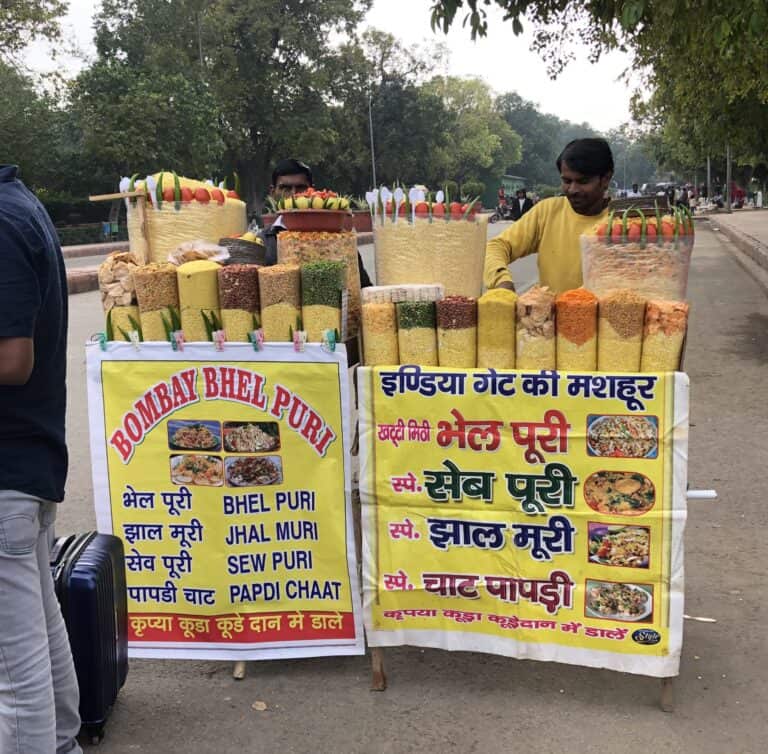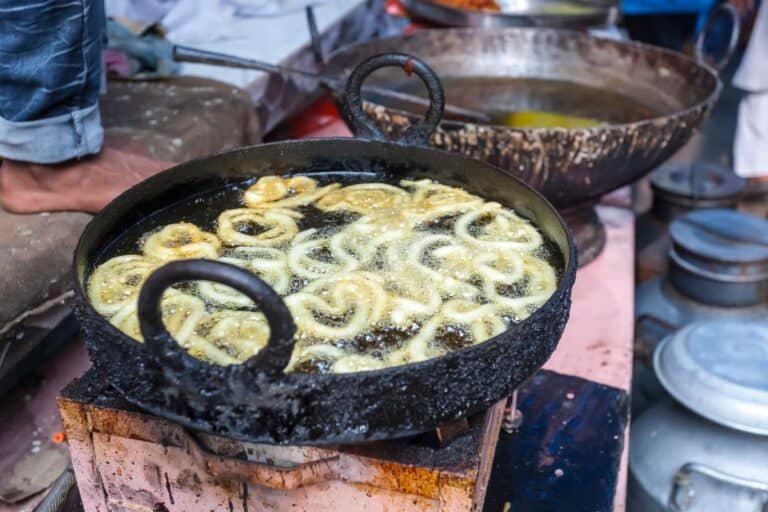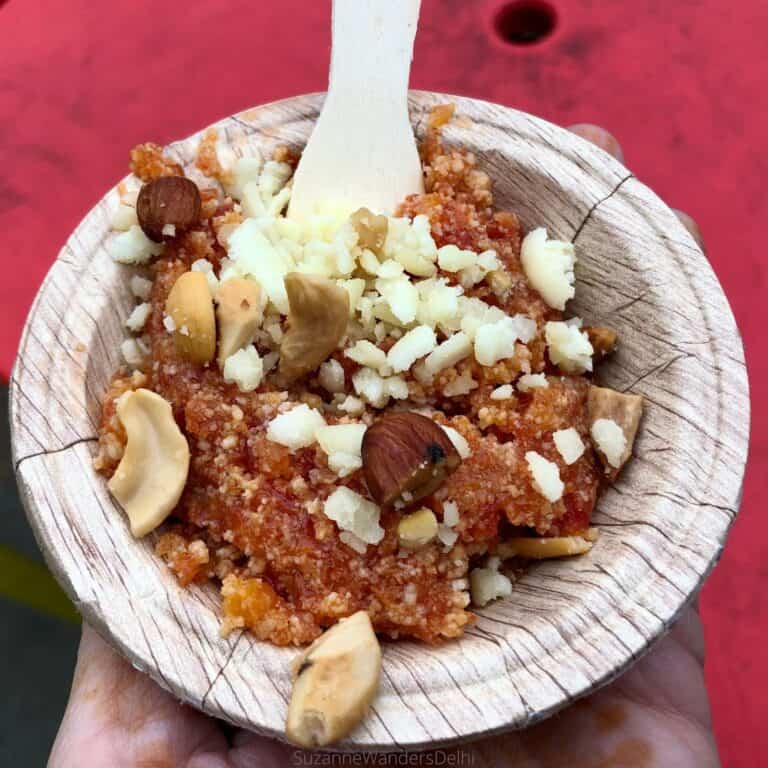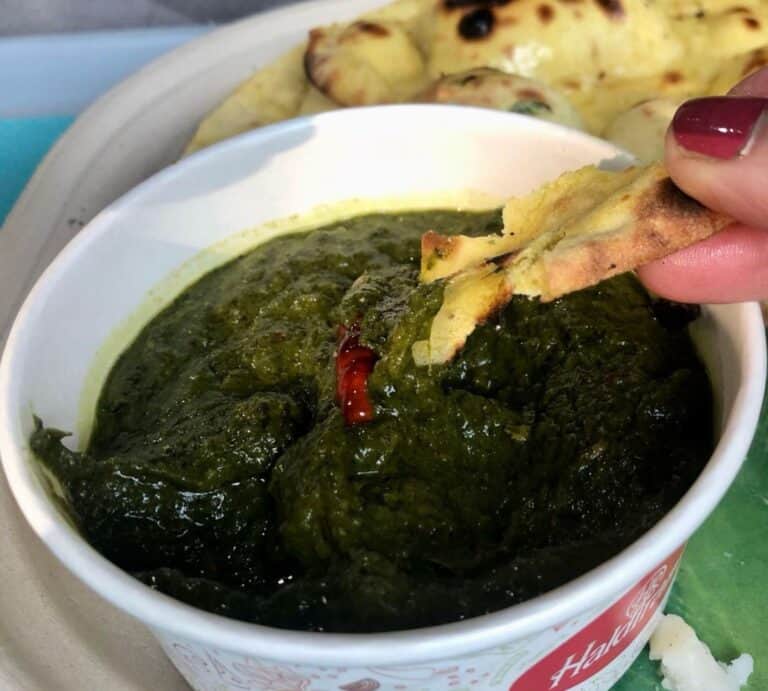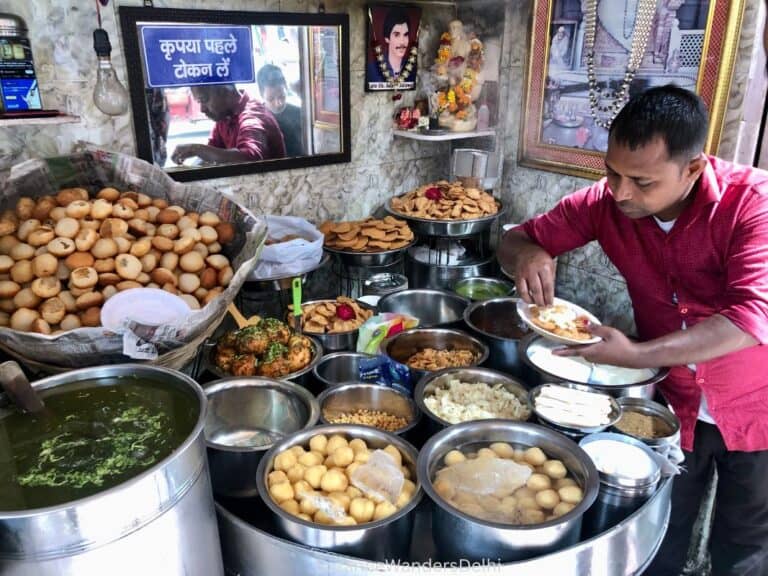Suzanne Wanders Delhi contains affiliate links. If you make a purchase using one of the links below, I may receive compensation at no extra cost to you. I only recommend products and services I use and trust. Read my disclaimer for more information.
Until you have eaten in the lanes and had chai from the seller on the corner, you have not had the full Delhi experience. To really appreciate Delhi, you must know how to eat local and stay healthy. Thousands of people eat this way every day and you can too following a few simple guide lines.
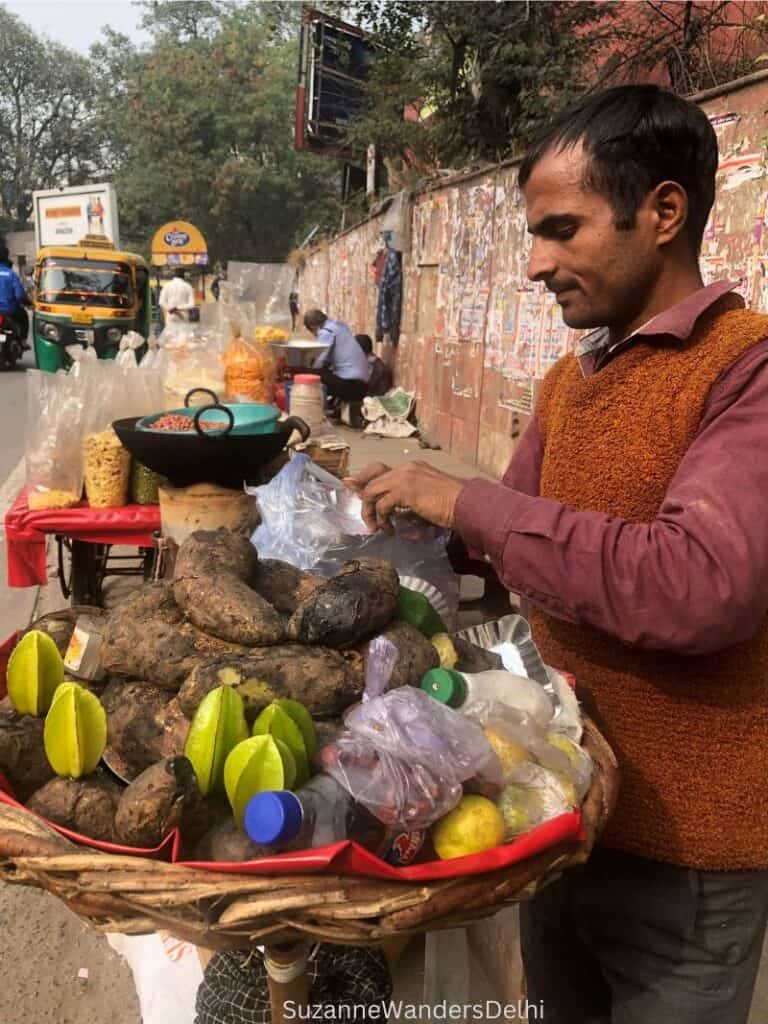
I know you have probably been told not to eat the street food and been warned about Delhi Belly. Most visitors arrive believing this. But I live here, and I’m telling you, it is a huge misconception. Yes, of course you can get sick – there are unhygienic places, but getting sick from street food is the exception, not the norm.
Street food is safe as long as you practice some common sense. I’m going to tell you exactly how to eat street food and what to watch for. The range of street cuisine is astounding and incredibly delicious. Plus it’s super cheap, fresh and everywhere! It would be a mistake to miss out on it.
If this is your first trip to Delhi, read my complete guide and suggested itineraries for first time visitors.
What is Eating Local?
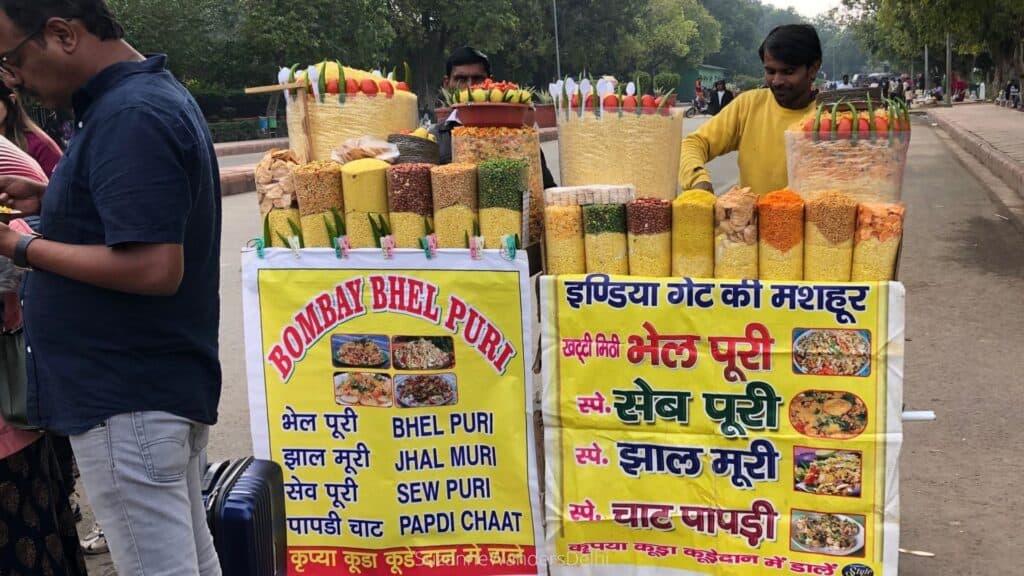
Eating local means eating from the carts and stands that abound absolutely everywhere. You will see them in markets, outside malls, beside office buildings and attractions, next to metro stations, under highway flyovers and in parks.
Eating local also means eating at the dhabas – the simple roadside restaurants where you can often see the food being prepared.
How to Eat Local and Stay Healthy
It is possible to eat local food from the streets and dhabas in Delhi and stay healthy. Once you’re aware of a few tips and things to watch for, you can pretty much eat anywhere in the city. Don’t miss out on one of the best things about Delhi!
How to Safely Eat Street Food
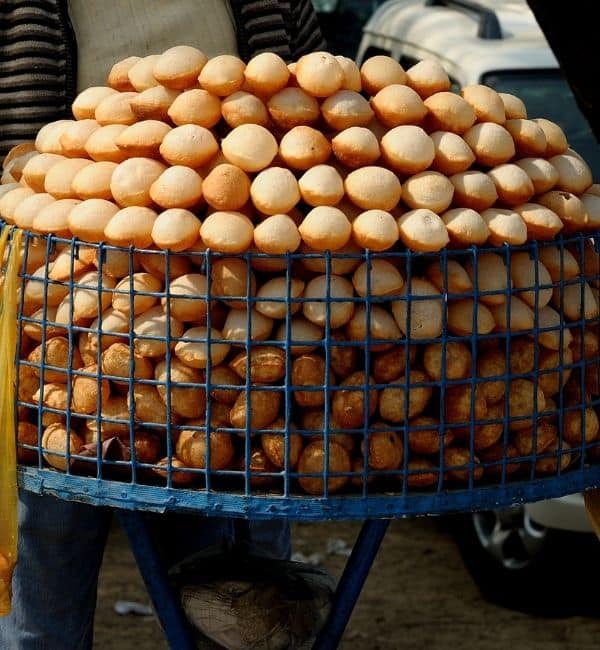
- Choose busy stalls with a lineup or steady traffic. Locals know where the good food is, and a busy stall means fresh ingredients.
- Do not eat anything with water like golgappa (aka pani puri), little fried hollow balls filled with spiced water.
- Avoid fruit or vegetables that are not peeled as they may have been washed in unfiltered water.
- Avoid meat but some kababs are okay. If the kababs are cooked in front of you and it’s a busy shop it’s probably fine, but use your discretion. Absolutely no meat on really hot and humid days – meat can spoil quickly.
- Avoid lassi (the yogurt drink) or any cold drink that is not in a sealed bottle. You could safely drink these in a restaurant like Haldiram’s.
- Chai (tea) and hot coffee are safe since they are boiled. Ask for a paper cup, not clay. The clay cups are supposed to be single use, but some chai sellers ‘recycle’ them.
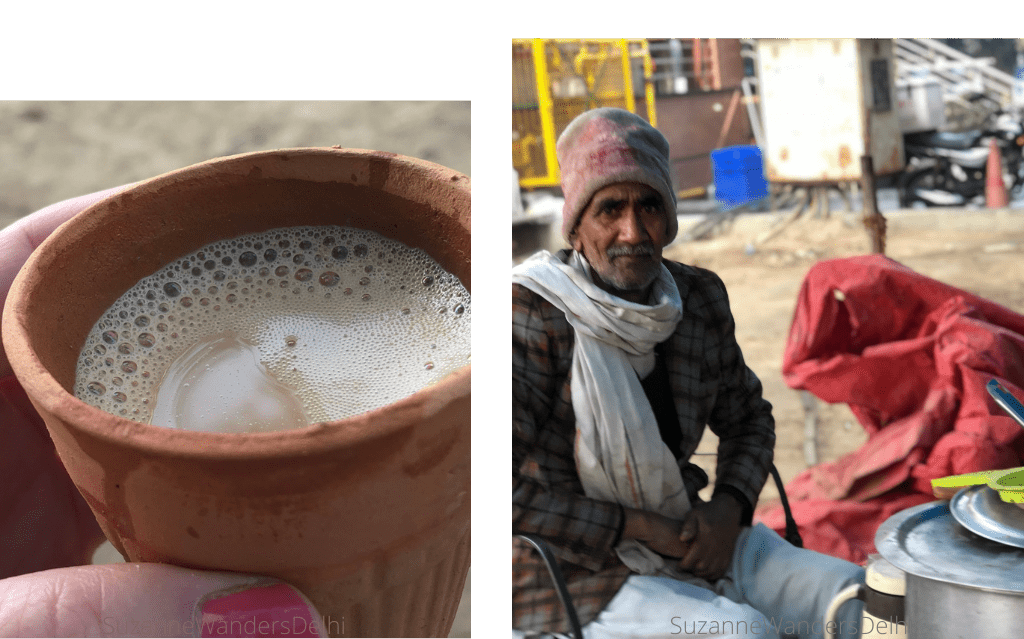
- Fried snacks are fine but make sure the oil is not murky, and there isn’t a lot of food debris floating in it.
- In general, cooked foods are fine since heat kills bacteria (but be cautious with meat).
- Roasted foods such as nuts or roasted sweet potato are safe.

- Avoid any yogurt based sauce or cold milk sweet during summer or monsoon season. Heat and humidity cause food to spoil quickly. Many snacks are doused with yogurt sauce and it may be hard to avoid – a little should be fine, just don’t slurp up every bit on the plate.
- Absolutely no ice – it will almost certainly have been made with unfiltered water.
- Drink only bottled or filtered water. Delhi tap water is not safe to drink.
- Wash your hands or use disinfectant wipes before eating.
Read my beginner’s guide to the street food of Delhi for a look at the different street foods of Delhi and where to eat them.
A Safe Alternative to Street Food, Haldiram’s

If you want typical street food but are still concerned about hygiene, this is a wonderful alternative. Haldiram’s is an Indian food company that has a chain of restaurants across the country.
There are locations all over Delhi, including Chandni Chowk, one of the major street food areas. You can find Haldiram’s locations here: https://www.haldiram.com/restaurant-locator.
Haldiram’s restaurants are cafeteria style; you order and pay at the cash, pick up your food, then take it to your table. All food and drinks are safe to consume, including golgappas and lassi.
Two Great Street Food Markets in Delhi
Chawri Bazaar in Old Delhi
Chawri Bazaar is basically street food headquarters. This is the first place Delhiites think of when it comes to authentic street food. It is one of the oldest markets in the city, and some food shops have been there for many decades.
If you can tolerate the clogged lanes, noise and general mayhem that is characteristic of the area, you will be rewarded with incredibly delicious food and a culturally authentic experience.
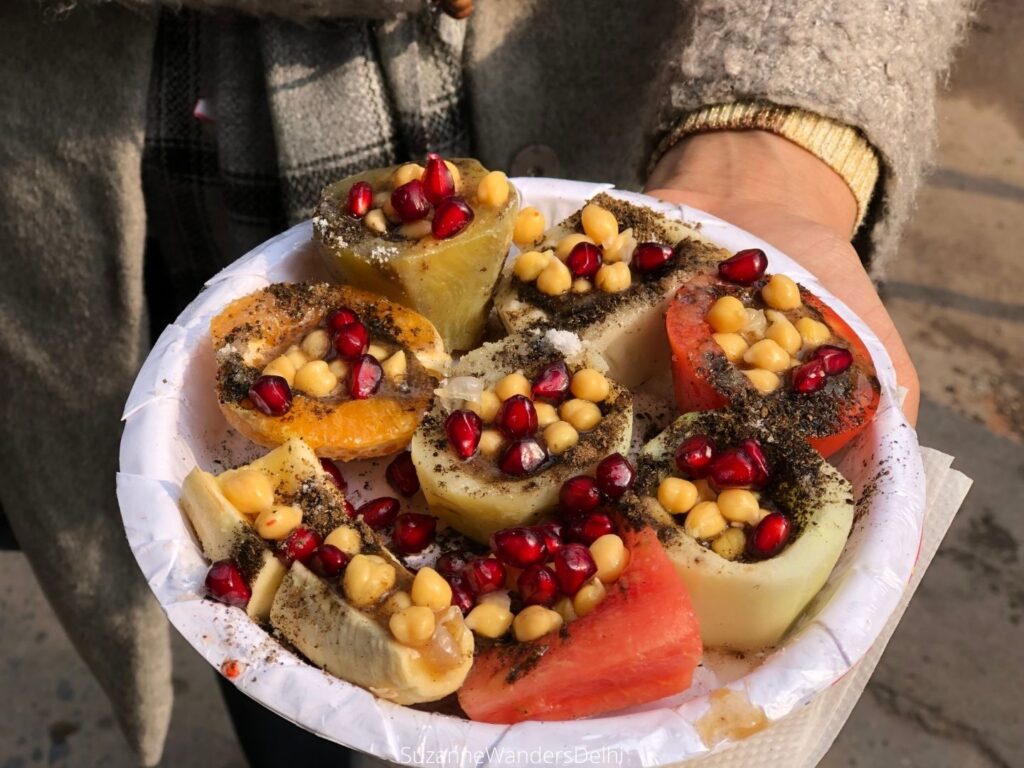

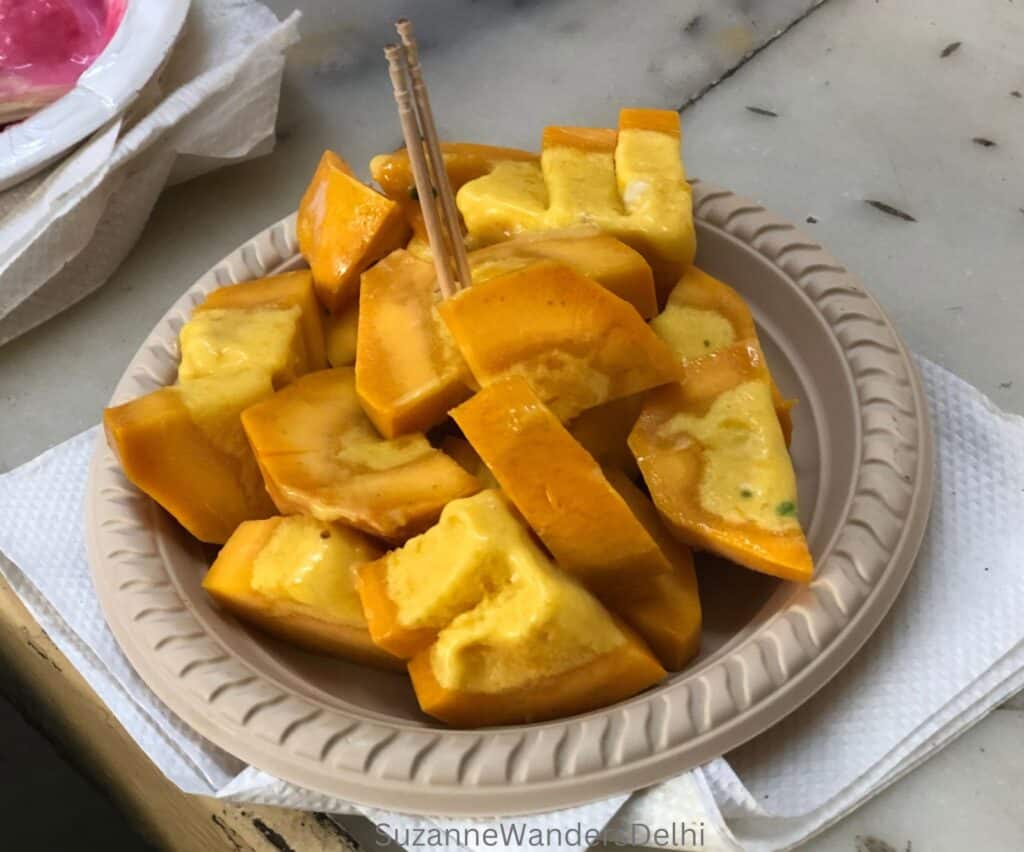
I always bring my visitors to Jain Coffee House for fruit and paneer sandwiches, Hira Lal Chaat Corner for delicious kuliya (fruit) chaat and Kuremal Mohan Lal Kulfi Wala for natural fruit kulfi frozen in whole fruits. But you can eat anywhere in Chawri Bazaar if you follow these tips on how to eat local and stay healthy. The variety and abundance of local food is incredible.
To reach Chawri Bazaar by metro, take the Yellow line to Chawri Bazaar station, exit Gate 2.
Amar Colony Market
This is my favourite market in Delhi for street food. It’s not as well known as neighbouring Central Market Lajpat Nagar but the food stalls here are outstanding. Like all Delhi markets, it gets busy in the evening, so if crowds are not your thing, go in the afernoon.
While the market itself is open from 10:00 am onwards, the food stalls open between noon and 1:00 pm. The market is closed on Monday but most of the food stalls are open.
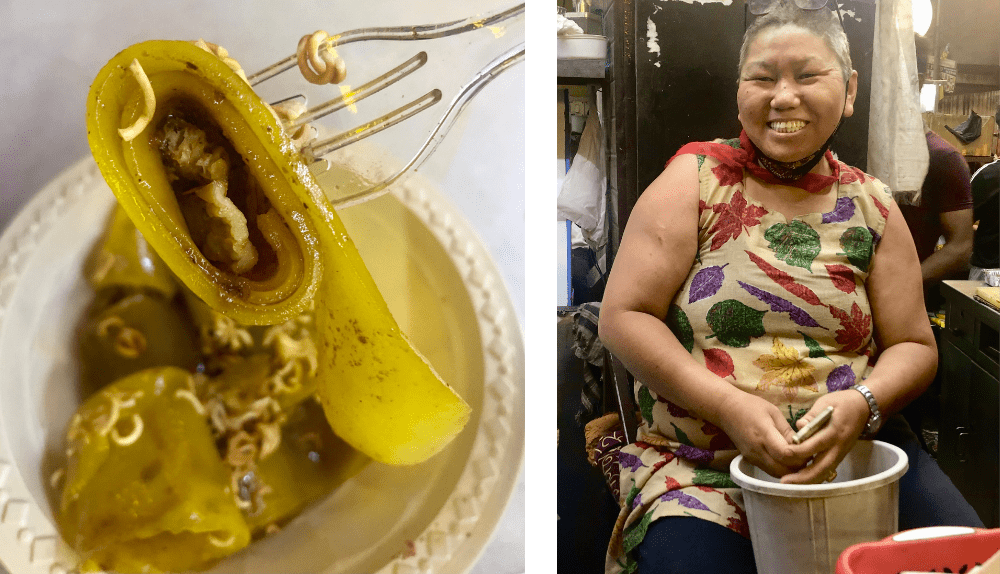
My favourite food stands in Amar Colony Market are Hunger Strike for momos, Tunday Kababi for mutton galouti (soft) kababs, Aunty Momo (do not confuse with Dolma Aunty Momo – they are different) for Tibetan dry laphing, and the faluda cart just outside Lenskart.com – he has excellent rabri faluda.
It’s easy to get to using the metro and gets very few tourists. Take the metro Violet line to Moolchand station and exit Gate 1. Take an auto rickshaw from there (or walk 15 minutes).
What to Do If You Get Delhi Belly
If you follow these tips, chances are you will be fine. On average, I eat street food 3-4 times a week and drink street chai daily, and I’ve only experienced Delhi belly 3 or 4 times in as many years.
The times I did get sick, it’s because I did something foolish, like the time I ate a plate of chaat smothered in yogurt sauce during a monsoon heat wave. My guest from Canada who was more cautious than me was absolutely fine. And chances are you will be fine too, but in case you experience an upset system, here’s what to do:
- Rest.
- Drink water, even if it’s just sipping (make sure it’s bottled or filtered water).
- Rehydrate with oral rehydration salts.
- If symptoms persist more than 24 hours go to the pharmacy and ask the pharmacist for something. They are well versed in tummy upset and will know what to give you. Medicine is not expensive in India.
- Stick to a very bland diet, like the BRAT diet until everything is settled (bananas, plain rice, apple sauce, dry toast).
- If in doubt see a doctor.
If you have to tour or travel while experiencing symptoms, carry tissues, hand wipes and small change for public toilets. You may want to consider taking Imodium.

The Wrap-up on How to Eat Local and Stay Healthy
Now that you are aware of how to eat local and stay healthy, go explore and find out why Delhi is a foodie’s paradise. Great food is absolutely everywhere in the city and the best way to experience Delhi is by seeing and tasting!
Don’t forget travel insurance! It’s always a good idea to carry travel insurance just in case something goes wrong. I really like and use SafetyWing

